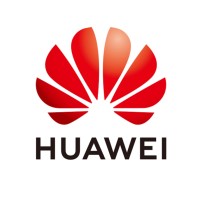Company Cyber Security Posture
NANA
NA Company Details
NA
NA
NA
NA
NA
NA
Scan still pending
NA
NA
Between 200 and 800
This score is AI-generated and less favored by cyber insurers, who prefer the TPRM score.
 NA Global Score
NA Global Score.png)

Company Scoring based on AI Models
| Model Name | Date | Description | Current Score Difference | Score |
|---|---|---|---|---|
| AVERAGE-Industry | 03-12-2025 | This score represents the average cybersecurity rating of companies already scanned within the same industry. It provides a benchmark to compare an individual company's security posture against its industry peers. | N/A | Between 200 and 800 |
Company Cyber Security News & History
| Entity | Type | Severity | Impact | Seen | Url ID | Details | View |
|---|
Company Subsidiaries

NA
Access Data Using Our API

Get company history
.png)
NA Cyber Security News
Researchers Uncover Years-Long Cyber Espionage on Foreign Embassies in Belarus
Researchers Uncover Years-Long Cyber Espionage on Foreign Embassies in Belarus ... A hitherto undocumented threat actor operating for nearly a ...

NA Similar Companies

Circet
A global player in the telecom infrastructure services industry, the Circet Group provides operators, local authorities and key accounts throughout the world with an integrated turnkey offering of fixed and mobile infrastructure services, including engineering, deployment, installation and maintenan

Airtel Africa
Airtel Africa is a leading provider of telecommunications and mobile money services, with a presence in 14 countries in Africa, primarily in East Africa and Central and West Africa. Airtel Africa offers an integrated suite of telecommunications solutions to its subscribers, including mobile voice a

OPPO
Founded in 2004, OPPO is one of the world's leading innovators of smart devices. With operations in over 60 countries and regions, OPPO's more than 290,000 points of sales and 1,900 official service centers share the beauty of technology with users all over the world. To forward our vision of a bett

Politicnico di Torino
The Polytechnic University of Turin (Italian: Politecnico di Torino, POLITO) is an engineering university based in Turin, northern Italy. Established in 1859, Politecnico di Torino is Italy’s oldest Technical University. It is also widely regarded as one of the best universities worldwide in the fie

Huawei
Huawei is a leading global provider of information and communications technology (ICT) infrastructure and smart devices. With integrated solutions across four key domains – telecom networks, IT, smart devices, and cloud services – we are committed to bringing digital to every person, home and organi

TDC Song
TDC Song has been part of TDC Group since year 2004. Company's name was changed into TDC in all Nordic countries in 2008. Please see www.tdc.com, www.tdc.se, www.tdc.fi and www.tdc.no. The story of TDC has been termed by many as a true business adventure that started small with only 22 subscribe

Frequently Asked Questions
Explore insights on cybersecurity incidents, risk posture, and Rankiteo's assessments.
NA CyberSecurity History Information
How many cyber incidents has NA faced?
Total Incidents: According to Rankiteo, NA has faced 0 incidents in the past.
What types of cybersecurity incidents have occurred at NA?
Incident Types: The types of cybersecurity incidents that have occurred include .
Additional Questions
What Do We Measure?
















Every week, Rankiteo analyzes billions of signals to give organizations a sharper, faster view of emerging risks. With deeper, more actionable intelligence at their fingertips, security teams can outpace threat actors, respond instantly to Zero-Day attacks, and dramatically shrink their risk exposure window.
These are some of the factors we use to calculate the overall score:
Identify exposed access points, detect misconfigured SSL certificates, and uncover vulnerabilities across the network infrastructure.
Gain visibility into the software components used within an organization to detect vulnerabilities, manage risk, and ensure supply chain security.
Monitor and manage all IT assets and their configurations to ensure accurate, real-time visibility across the company's technology environment.
Leverage real-time insights on active threats, malware campaigns, and emerging vulnerabilities to proactively defend against evolving cyberattacks.




